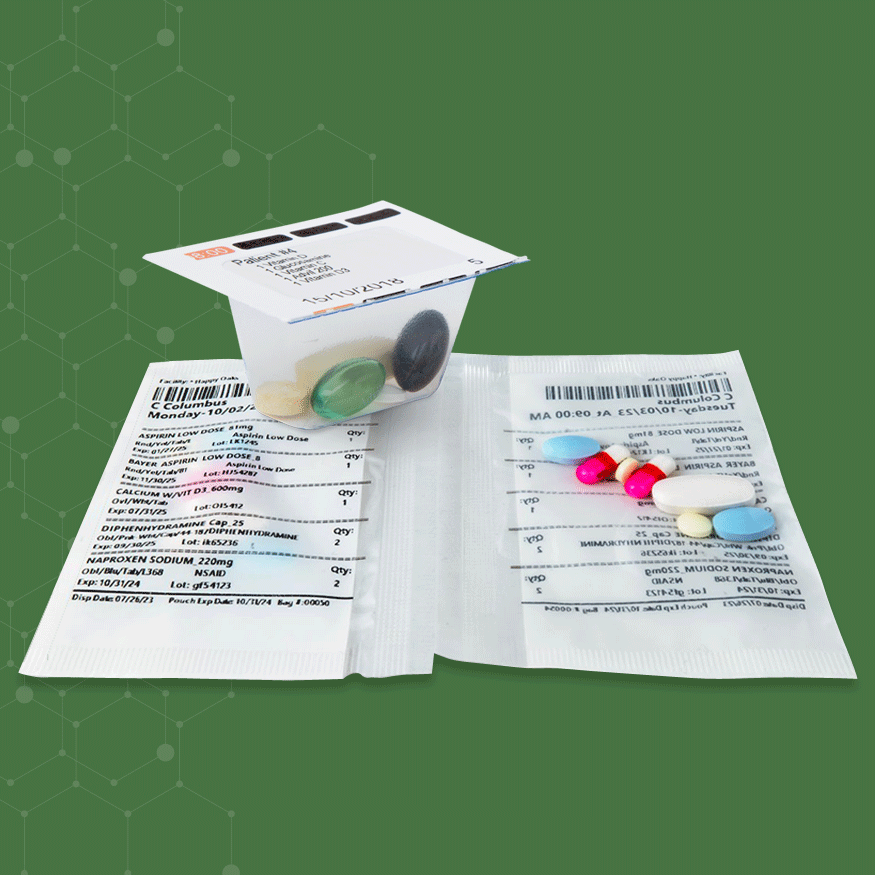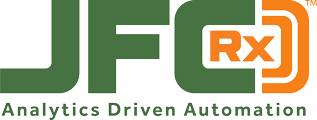
Improving Medication Adherence With Automated Multi-Dose Pouch Packaging
Doctors and pharmacists know keenly the chronic issue of medication adherence. This challenge claims the lives of more than 100,000 Americans each year and, according to the American Heart Association1, costs the health care system as much as $300 billion for services related to repercussions from non-adherence. Fortunately, there is a way to significantly improve adherence rates while also streamlining pharmacy operations. Automated adherence packaging offers pharmacies a game-changing solution that is slowly reshaping the pharmacy landscape.
Understanding the Adherence Challenge
Non-adherence is a common, unfortunate occurrence. On average, patients might only complete a handful of monthly prescription refills—typically six, seven, or eight out of the 12 months of prescribed medication for their health conditions. For example, one study noted that patients with chronic conditions such as diabetes and hypertension typically have an adherence rate of 50% to 60%2, even among patients with good insurance and drug benefits.
The consequences of poor adherence are far-reaching. Non-adherent patients risk disease progression, hospital readmissions, and poorer overall health outcomes. From a business perspective, missed refills translate directly to lost revenue for pharmacies, while unpredictable refill patterns can lead to inventory management issues.
The Rise of Adherence Packaging
Adherence packaging, particularly automated multi-dose pouch systems, offers pharmacists a powerful tool to combat these challenges. These automated systems organize medications by date and time, making it easy for patients to take the right medications at the right time. The convenience factor alone can significantly boost adherence rates.
For pharmacies, automated systems offer numerous benefits. Automated pharmaceutical packaging such as a multi-dose pouch system can handle high volumes of prescriptions more efficiently than manual methods. This reduces the risk of human error in medication dispensing and, in addition, helps with inventory control. This increased efficiency can lead to substantial time and cost savings and help pharmacies reallocate staff for more customer-facing tasks.
The Business Case for Adherence Packaging
Implementing adherence packaging solutions can have a substantial positive impact on a pharmacy’s operations and bottom line. By improving adherence rates, pharmacies can capture those lost refills. If the average prescription gross profit is $10, and adherence fills a potential gap of missing 4-5 prescriptions per patient per year, the revenue impact quickly totals up.
Moreover, offering adherence packaging services can differentiate a pharmacy in a crowded market. Automated packaging can lead to opportunities to service long-term care facilities or home health care agencies and other specialized markets, potentially expanding your customer base. The COVID-19 pandemic has accelerated a shift towards “long-term care at home,” with more elderly patients choosing to age in place rather than move to facilities. This trend presents both challenges and opportunities for pharmacies.
Adapting services to cater to this growing demographic of at-home long-term care patients is crucial. Consider implementing or expanding delivery services to reach these patients.
Key Benefits of Adherence Packaging:
- Improved patient adherence and health outcomes
- Increased pharmacy revenue through captured refills
- Enhanced inventory management and reduced waste
- Competitive advantage in the market
- Opportunities for expansion into long-term care services
- Reduced medication errors and improved patient safety
- Increased efficiency in pharmacy operations
Overcoming Implementation Challenges
While the benefits are clear, implementing adherence packaging does come with some challenges. The upfront cost of automated packaging systems represents a significant initial investment, though the long-term benefits can soon offset this cost. Consider working with a company that offers a comprehensive package that includes not just the machinery, but one that invests in a long-term relationship to help guide your business through staff training and assists with patient education.
Regulatory compliance is another important aspect. It’s essential to ensure your packaging meets all state Board of Pharmacy requirements for labeling and dispensing. Working with experienced vendors such as JFCRx™ can help navigate these regulatory waters.
Some solutions offer companion mobile apps that can remind patients to take their medications and track adherence. These technological advancements not only improve patient care but also provide pharmacies with valuable insights into patient behavior.
The Future of Adherence Packaging
As technology continues to evolve, we can expect to see even more advanced adherence solutions. Smart packaging with embedded sensors that can track when medications are taken is on the horizon. AI-driven predictive analytics may soon be able to predict which patients are at risk of non-adherence and suggest interventions.
We’re also likely to see more personalized packaging solutions that can accommodate a wider range of medication types, including liquids and inhalers. These advancements will further improve the efficacy of adherence packaging and expand its applicability to a broader range of patients.
Adherence Packaging Offers a Win/Win Scenario
Implementing automated adherence packaging is more than just a business decision – it’s an investment in better patient care. Automated multi-dose pouch packaging helps ensure that patients are taking the right meds at the right time in the right dosage.
When selecting an automated pharmacy system, consider key factors including scalability, integration capabilities, user-friendliness, reliability, vendor expertise, and a company that takes a partnership approach. The ideal system grows with your business, integrates seamlessly with existing software, is easy to use, minimizes downtime, and comes with expert support.
A vendor like JFCRx offers solutions that drive efficiency, foster growth, and improve patient experience. Don’t settle for a one-size-fits-all, impersonal approach — call JFCRx today to explore tailored automation options that meet your specific business needs and future goals.

